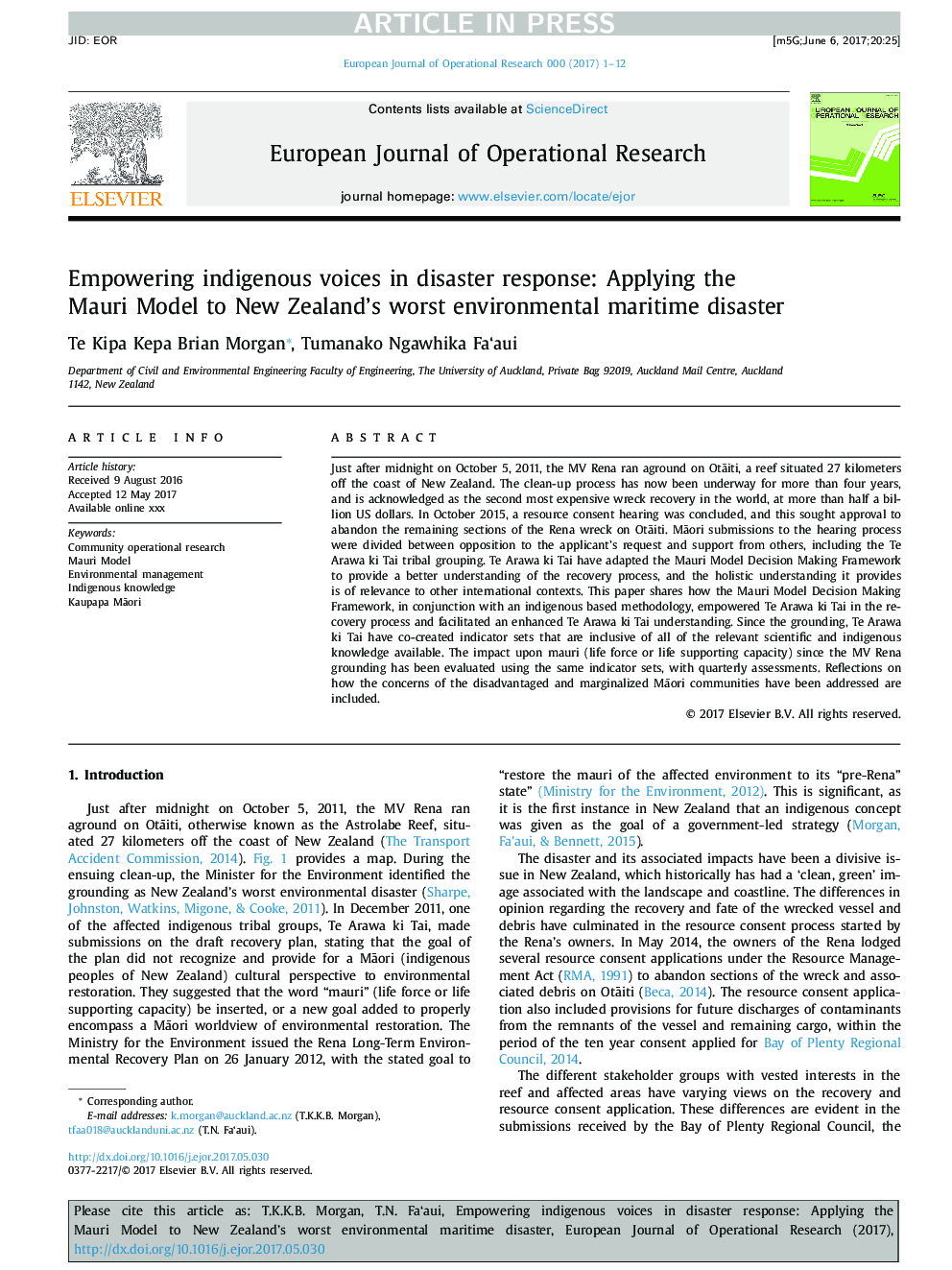| Article ID | Journal | Published Year | Pages | File Type |
|---|---|---|---|---|
| 6894805 | European Journal of Operational Research | 2018 | 12 Pages |
Abstract
Just after midnight on October 5, 2011, the MV Rena ran aground on OtÄiti, a reef situated 27 kilometers off the coast of New Zealand. The clean-up process has now been underway for more than four years, and is acknowledged as the second most expensive wreck recovery in the world, at more than half a billion US dollars. In October 2015, a resource consent hearing was concluded, and this sought approval to abandon the remaining sections of the Rena wreck on OtÄiti. MÄori submissions to the hearing process were divided between opposition to the applicant's request and support from others, including the Te Arawa ki Tai tribal grouping. Te Arawa ki Tai have adapted the Mauri Model Decision Making Framework to provide a better understanding of the recovery process, and the holistic understanding it provides is of relevance to other international contexts. This paper shares how the Mauri Model Decision Making Framework, in conjunction with an indigenous based methodology, empowered Te Arawa ki Tai in the recovery process and facilitated an enhanced Te Arawa ki Tai understanding. Since the grounding, Te Arawa ki Tai have co-created indicator sets that are inclusive of all of the relevant scientific and indigenous knowledge available. The impact upon mauri (life force or life supporting capacity) since the MV Rena grounding has been evaluated using the same indicator sets, with quarterly assessments. Reflections on how the concerns of the disadvantaged and marginalized MÄori communities have been addressed are included.
Related Topics
Physical Sciences and Engineering
Computer Science
Computer Science (General)
Authors
Te Kipa Kepa Brian Morgan, Tumanako Ngawhika Fa`aui,
